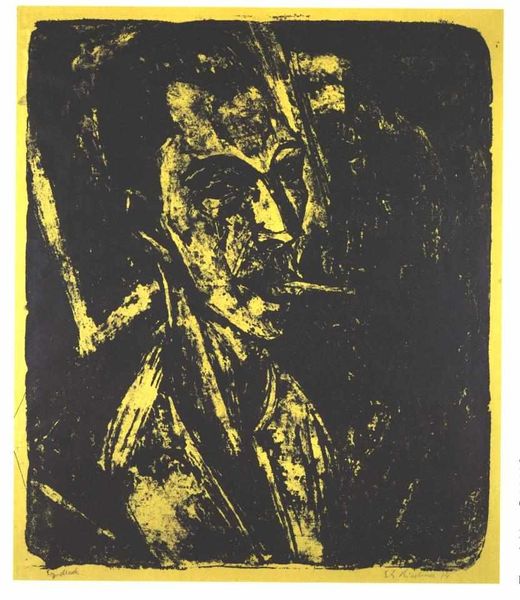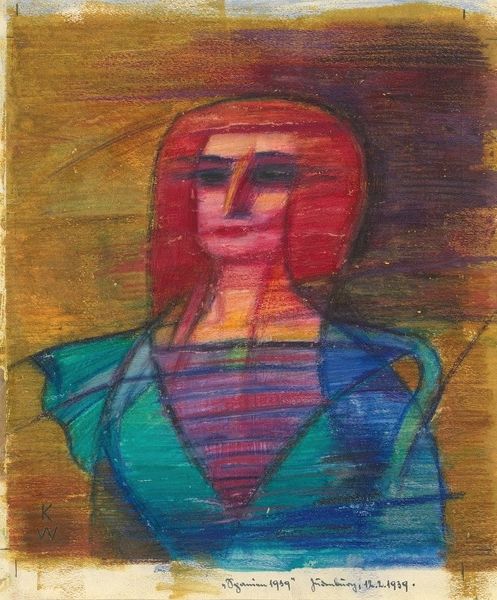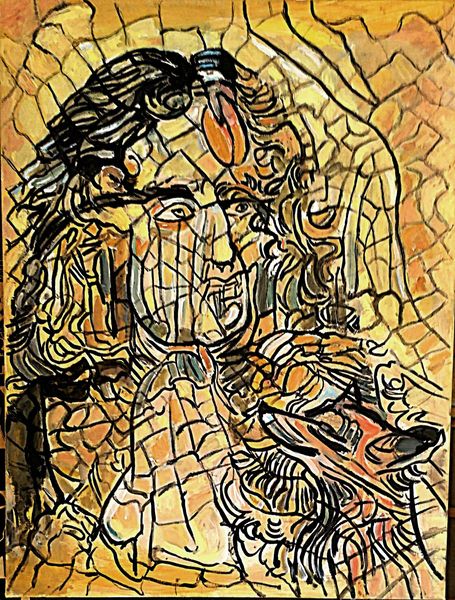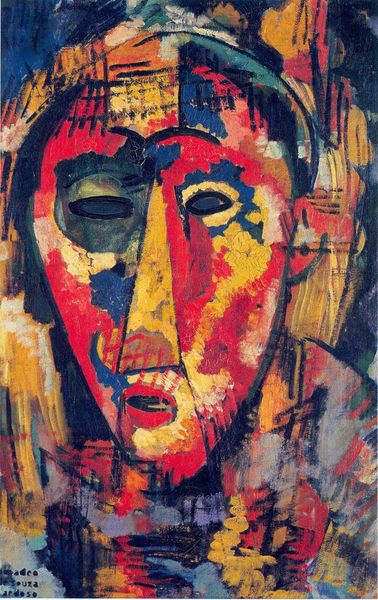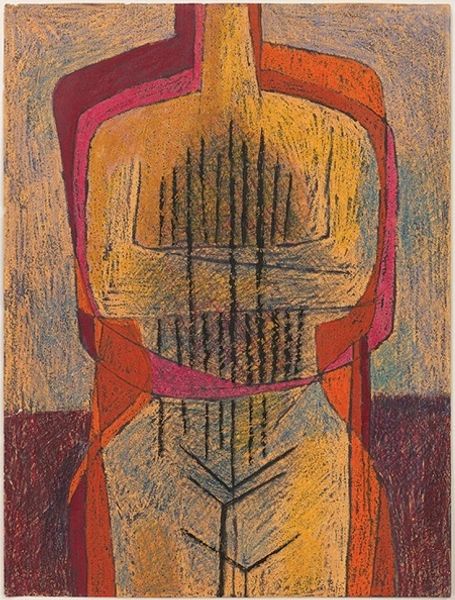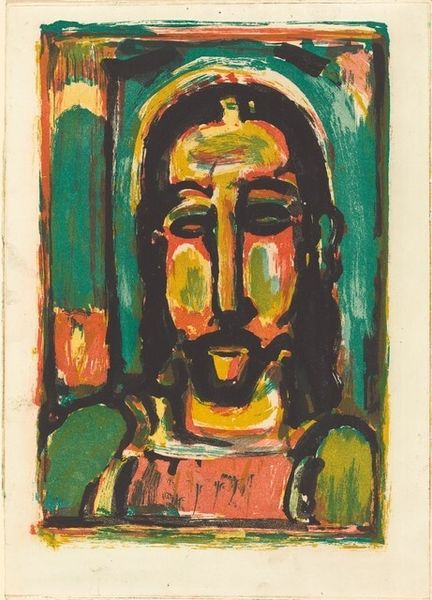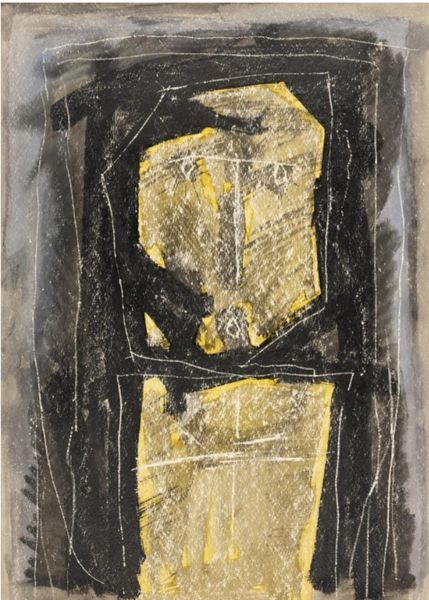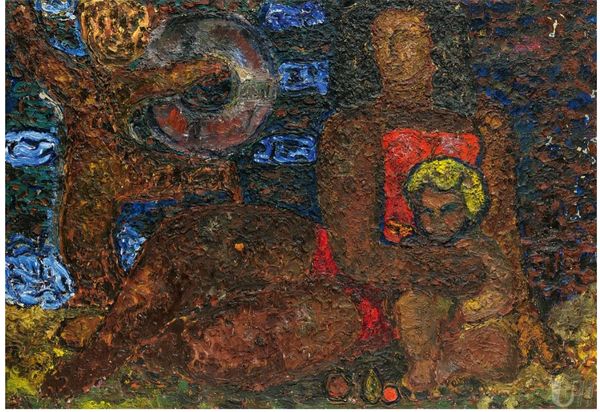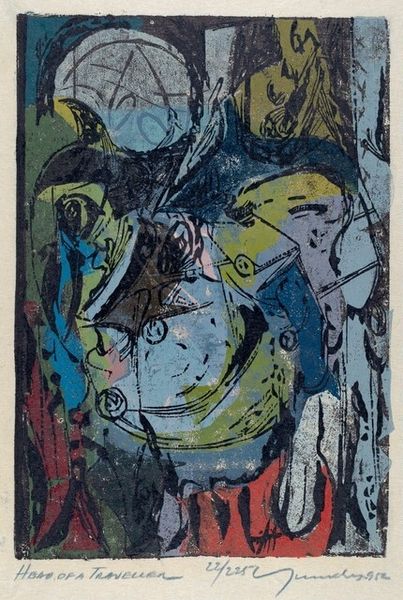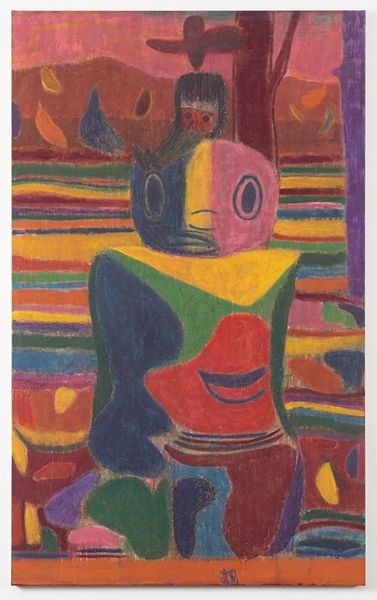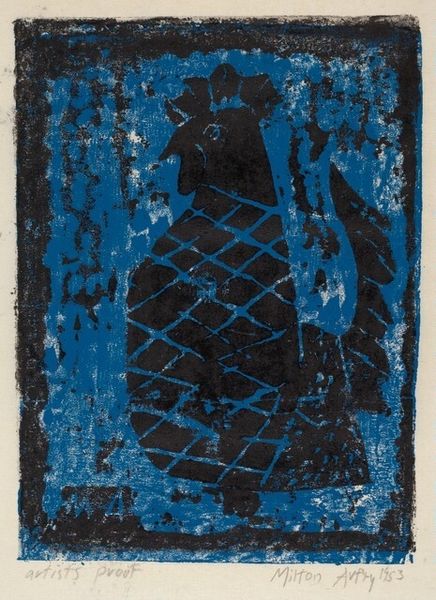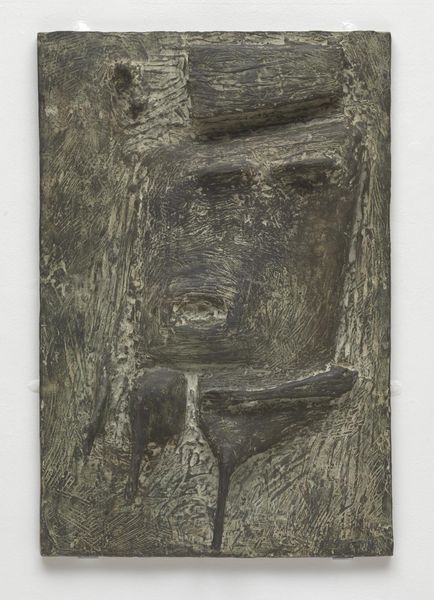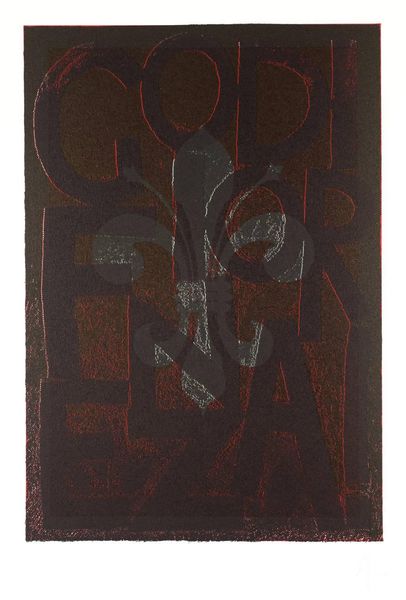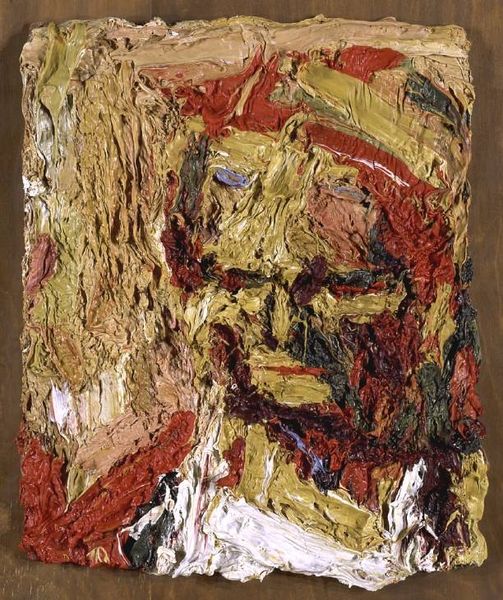
#
natural stone pattern
#
abstract painting
#
animal print
#
possibly oil pastel
#
oil painting
#
tile art
#
fluid art
#
acrylic on canvas
#
street graffiti
#
paint stroke
Copyright: Vudon Baklytsky,Fair Use
Editor: This is "Portrait of Tregub," created in 1990 by Vudon Baklytsky, and it appears to be an oil painting on canvas. The colors are so vibrant, almost jarring, and the texture looks incredibly thick. I’m struck by the unusual shape of the canvas and the contrast between the warm portrait and the cool surrounding tones. How would you interpret this work, focusing on its formal elements? Curator: Certainly. Disregarding biographical information, the first thing that strikes me is the bold application of paint, what one might call impasto. It builds up a physical presence, defying the two-dimensionality traditionally associated with painting. Notice how this physicality contributes to a dynamic interplay of light and shadow. The black lines—consider them as graphic interventions—bisecting the composition add another layer of structural complexity. How do these lines affect your reading of the portrait? Editor: They almost feel like bars, or maybe fractured panes of glass, which adds a sense of confinement and distortion to the figure. It moves away from a traditional portrait into something more abstract and conceptual, I suppose. Curator: Precisely. These visual devices subvert conventional representation. Furthermore, examine the limited palette—predominantly yellows, reds, and blues. These are not merely descriptive colours; they contribute to an internal logic. Their arrangement generates a visual tension, don't you agree? It compels one to ask questions about the relationship between colour and form within the artwork itself. Editor: That’s a very interesting point! I was initially focused on the representational aspect, but seeing it in terms of the formal relations is changing my perception. I’m now considering the canvas shape as an important structural element and not just as a given aspect. Thank you! Curator: My pleasure. The act of critical observation allows us to move beyond surface impressions.
Comments
No comments
Be the first to comment and join the conversation on the ultimate creative platform.
